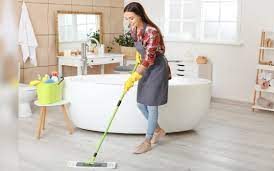Cob houses are a beautiful and unique type of home, often made from natural materials like clay, sand, and straw. While they offer many benefits such as energy efficiency and natural aesthetics, they also require special care and maintenance. In particular, the bathroom in a cob house can be a challenging space to keep clean and well-maintained. In this guide, we’ll provide some tips and tricks for cleaning and maintaining your cob house bathroom.
Choose the right materials
When designing your cob house bathroom, it’s important to choose materials that are both durable and easy to clean. For example, a concrete floor with a sealant can be a good choice as it’s easy to mop and won’t absorb water. Similarly, a ceramic tile or a polished plaster wall can be a great option as they are non-porous and can be easily wiped clean.
Ventilation is key
Proper ventilation is essential in any bathroom, but even more so in a cob house. Because cob is made from natural materials, it can be more susceptible to moisture damage. Make sure your bathroom has a good ventilation system to help reduce humidity levels and prevent mold growth. You can also use a dehumidifier to help control moisture levels.
Clean up spills and messes quickly
It’s important to clean up spills and messes as soon as they happen to prevent them from causing damage or stains. For example, if someone spills toothpaste on the counter, wipe it up immediately to prevent it from drying and sticking to the surface. This is especially important for cob surfaces, which can be more porous and absorbent than other materials.
Use natural cleaners
When it comes to cleaning your cob house bathroom, it’s best to use natural and non-toxic cleaners. Harsh chemicals can damage cob surfaces and may also be harmful to your health. Instead, try using vinegar, baking soda, or castile soap to clean surfaces like the sink, toilet, and shower. These natural cleaners are effective, safe, and won’t harm your cob surfaces. Cob houses
Use a squeegee to prevent water damage
Water damage can be a major issue in any bathroom, but it can be especially damaging to cob surfaces. To prevent water damage, use a squeegee to remove excess water from the shower walls and floor after each use. This will help prevent water from seeping into the cob and causing damage. Cob houses
Seal and protect your surfaces
To help protect your cob surfaces from moisture damage, it’s a good idea to seal and protect them with a natural sealant. This can help prevent water from penetrating the surface and causing damage. Additionally, you may want to consider using a wax or oil finish on your surfaces to help repel water and make them easier to clean.
Regular maintenance is key
Regular maintenance is essential to keep your cob house bathroom looking and functioning its best. This includes things like cleaning the toilet, sink, and shower regularly, checking for leaks or damage, and addressing any issues as soon as they arise. Regular maintenance can help prevent larger problems from developing and keep your bathroom looking and functioning great for years to come.
In summary, cleaning and maintaining a cob house bathroom can be a challenge, but with the right materials, ventilation, and cleaning products, it’s possible to keep your bathroom looking and functioning its best. Regular maintenance is key, and it’s important to address any issues as soon as they arise to prevent larger problems from developing. With these tips and tricks, you can enjoy a beautiful and functional cob house bathroom for years to come.

